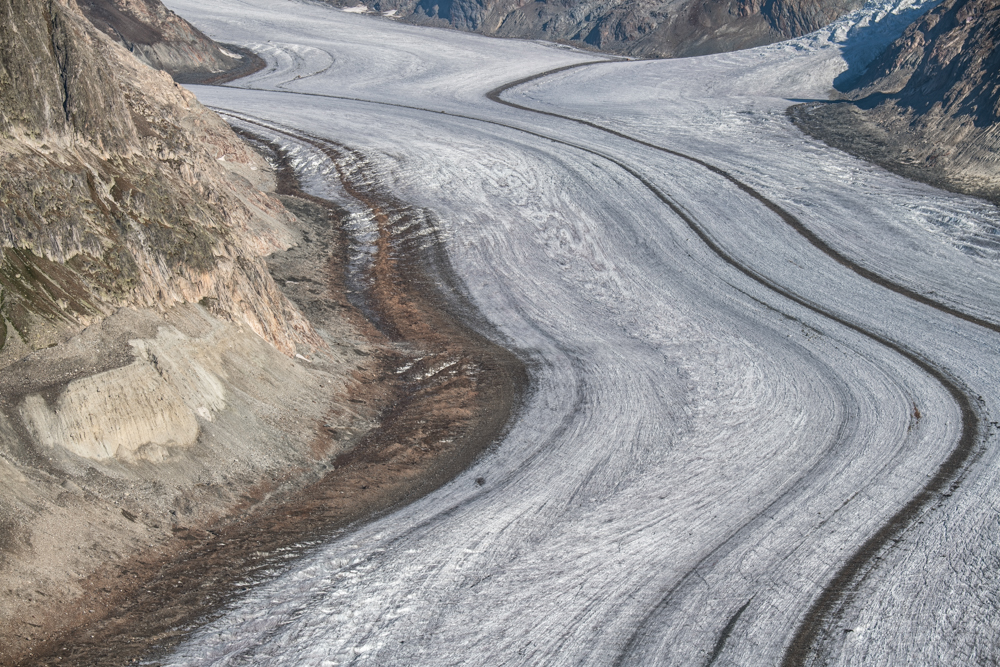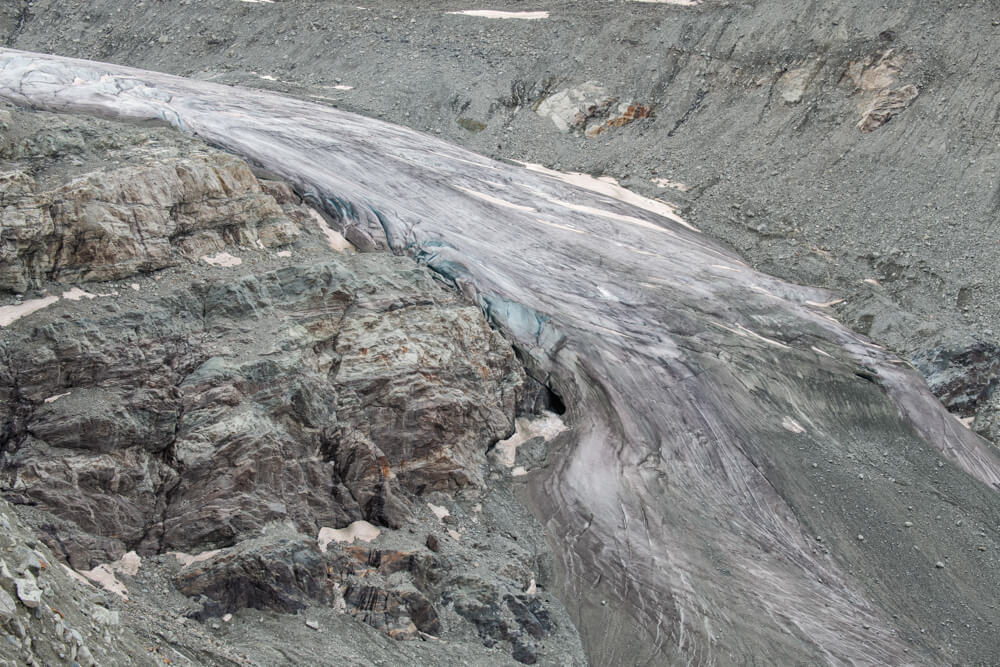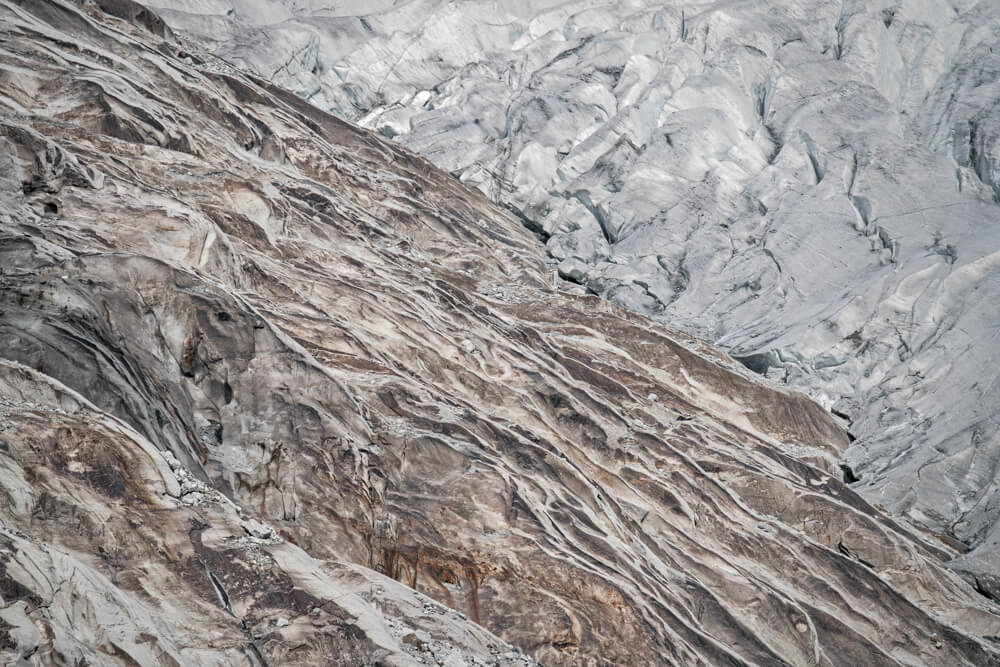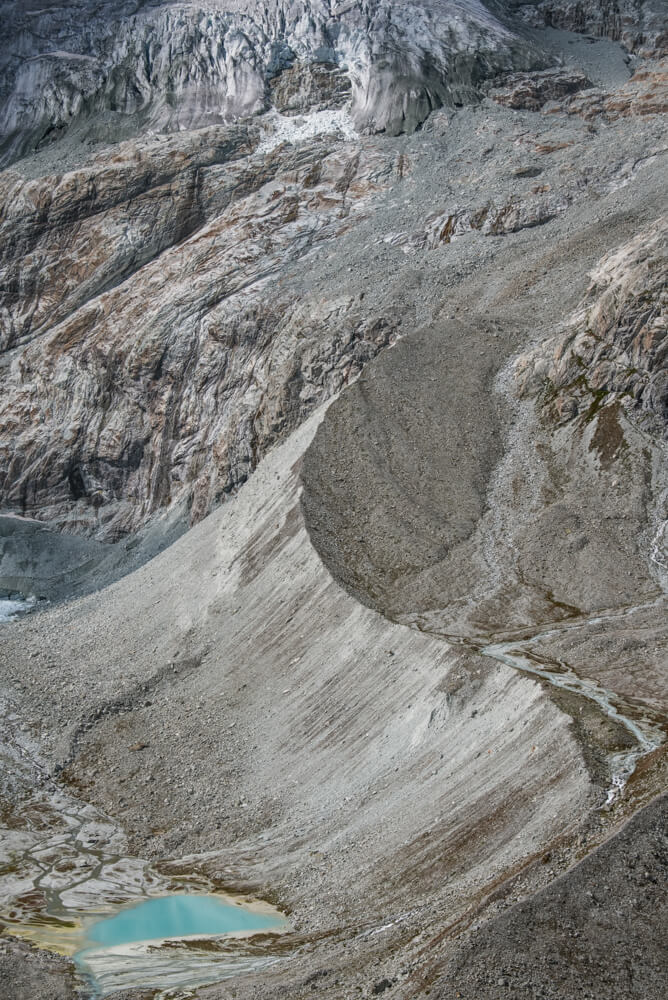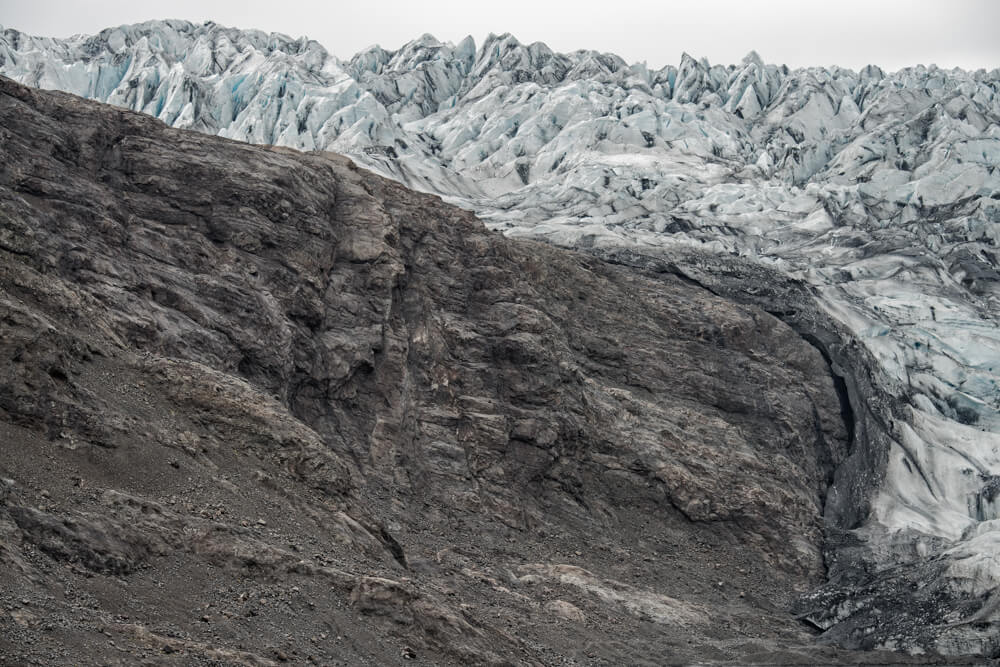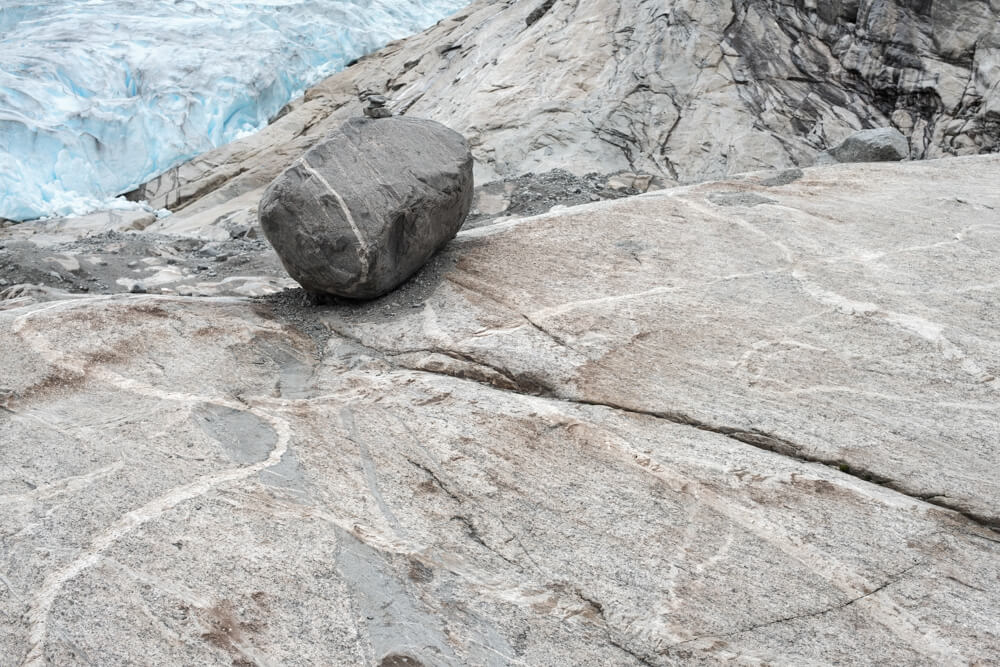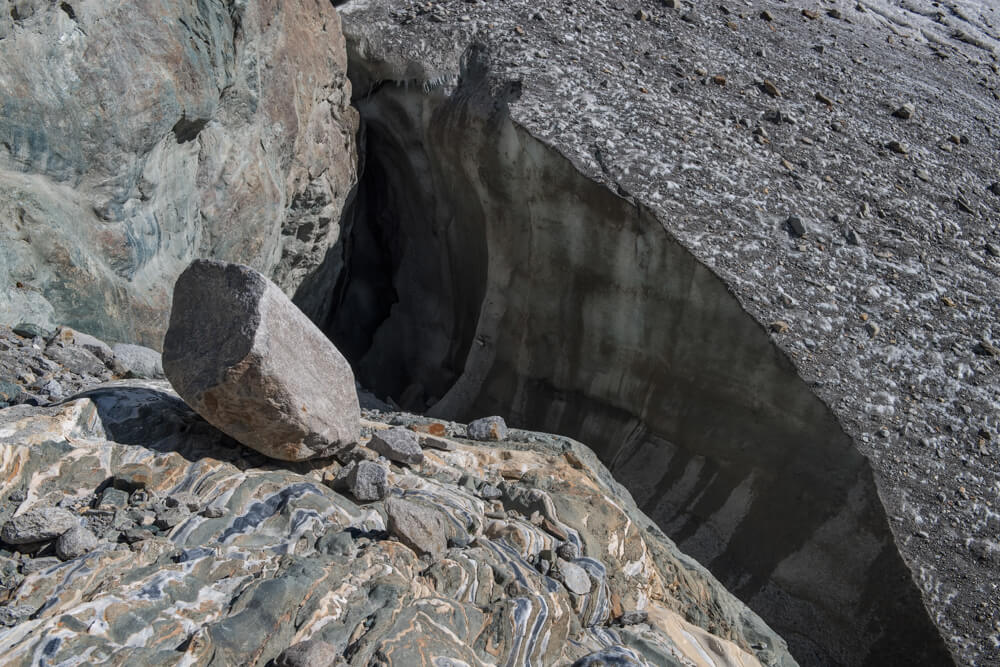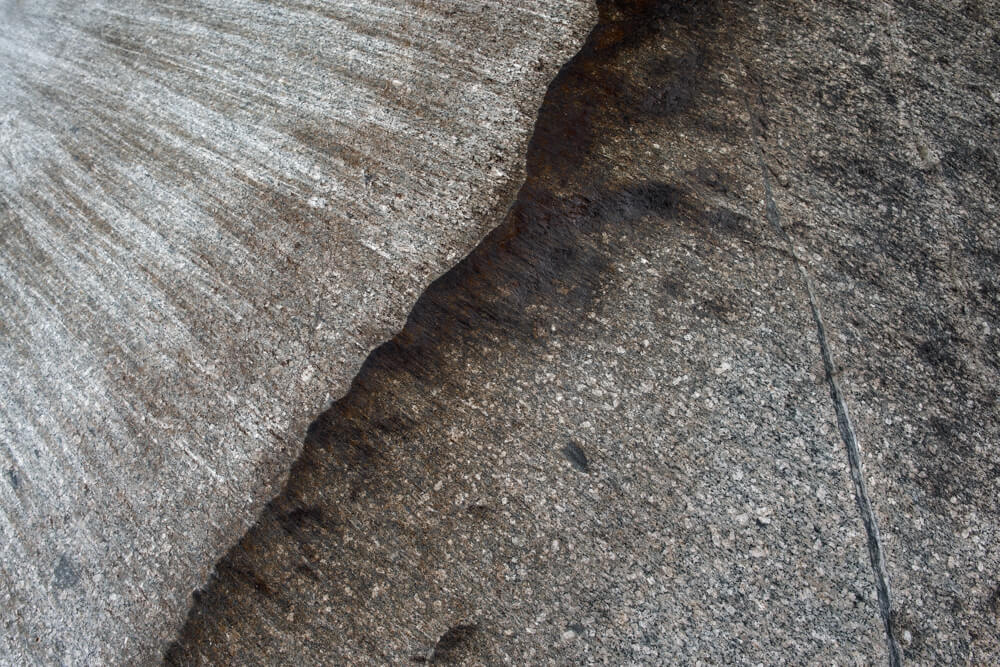Cycles of long-lasting glaciations and short, warmer interglacial periods have alternated fairly regularly in the history of the Earth. The level of the ice falls and rises like ebb and flow, the intervals being just much longer. Although we live in the Great Ice Age that started about 2.5 million years ago, we are now experiencing the warm interglacial period that lasts for only about 12,000 years. But in the last 160 years, a very warm period has prevailed, the glaciers are melting, and half of their mass is already gone.
No matter how much the accelerated retreat of the glaciers might worry us, at the same time it opens up new perspectives at the denuded body of the mountain. The glaciers are like layers of garments that hide the body underneath. As the mighty, icy outfit is melting away, the bare mountain body is revealed inch by inch. As if showing its charms for the first time, it shyly strips off layer after layer, before showing its furrowed and wrinkled body hidden for thousands of years.
The melting of the glaciers unveils remains and imprints of the icy clothing of previous seasons. Traces of distant cold epochs are impressed in the form of moraines, screes, glacial lakes and valleys, polished and carved rocks that seem to have been suffering for too long the cramping glacial costume. Now they have, at last, the chance to shine in full glory.
Earth will continue to change, mountains will rise and fall away. In a future hardly comprehensible to us, the plate tectonics that created the mountains will over millions of years destroy them. The new continents will be formed and shuffled around once again, and new glaciers will clad and shape new mountain chains.

